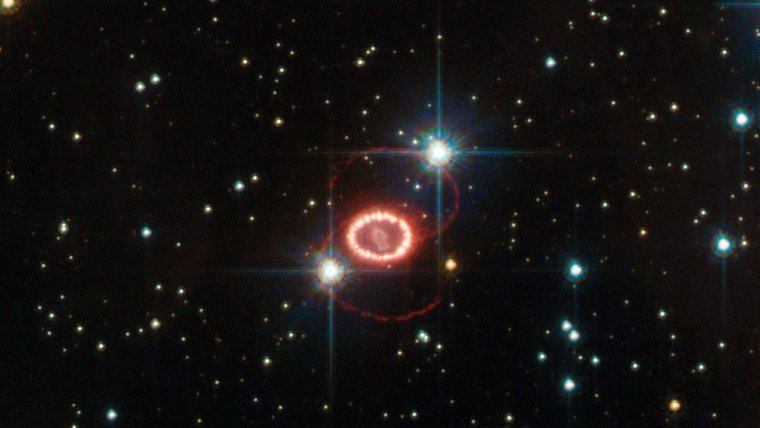| News / Science News |
Star Explosion is Lopsided
NASA | MAY 10, 2015
NASA's Nuclear Spectroscopic Telescope Array, or NuSTAR, has found evidence that a massive star exploded in a lopsided fashion, sending ejected material flying in one direction and the core of the star in the other.

The bright ring consists of material ejected from the dying star before it detonated. The ring is being lit up by the explosion's shock wave. ![]()
The findings offer the best proof yet that star explosions of this type, called Type II or core-collapse supernovae, are inherently asymmetrical, a phenomenon that had been difficult to prove before now.
The supernova remnant in the study, called 1987A, is 166,000 light-years away. Light from the blast that created the remnant lit up skies above Earth in 1987. While other telescopes had found hints that this explosion was not spherical, NuSTAR found the "smoking gun" in the form of a radioisotope called titanium-44.
Titanium is produced in the very heart of the explosion, so it traces the shape of the engine driving the disassembly of the star.
The NuSTAR spectral data reveal that titanium-44 is moving away from us with a velocity of 1.6 million mph (2.6 million kilometers per hour). That indicates ejected material flung outward in one direction, while the compact core of the supernova, called a neutron star, seems to have kicked off in the opposite direction.
YOU MAY ALSO LIKE





